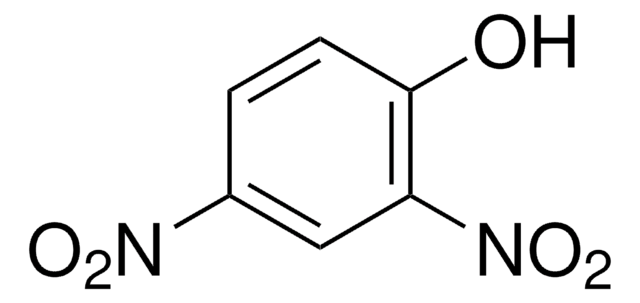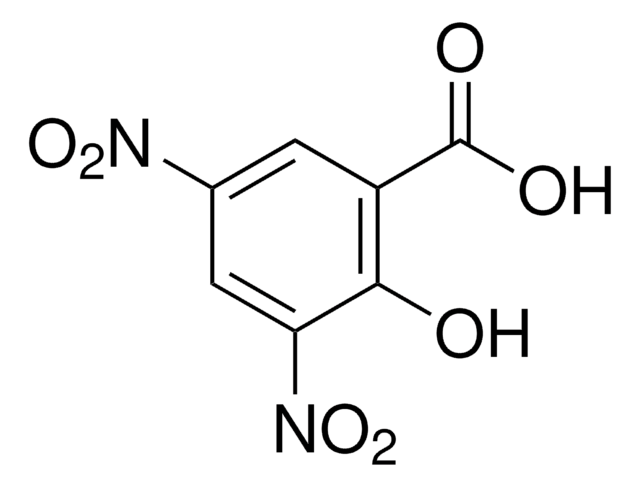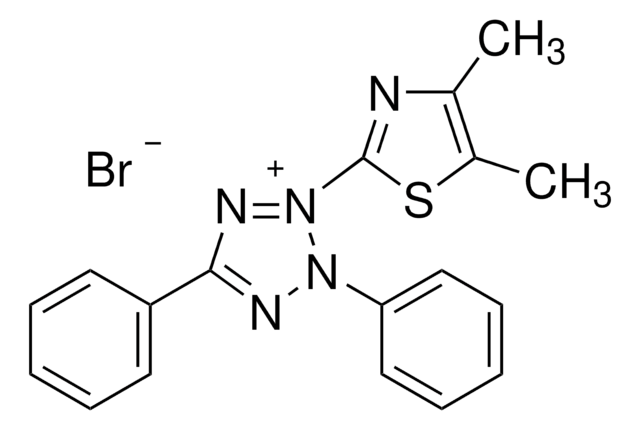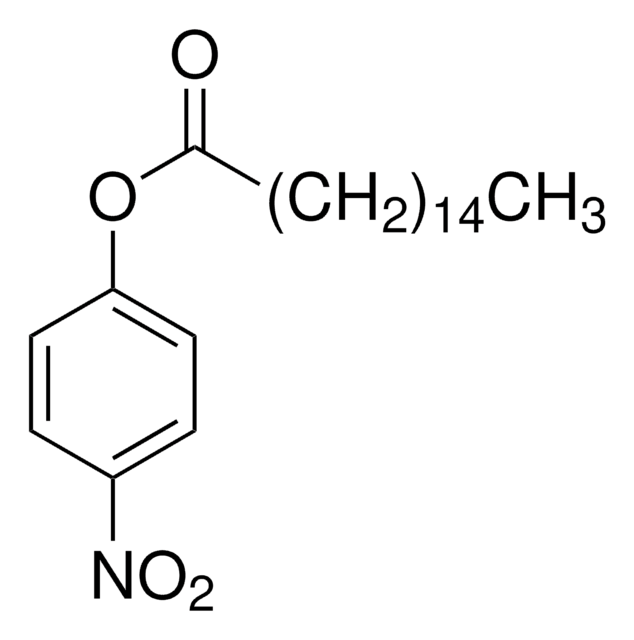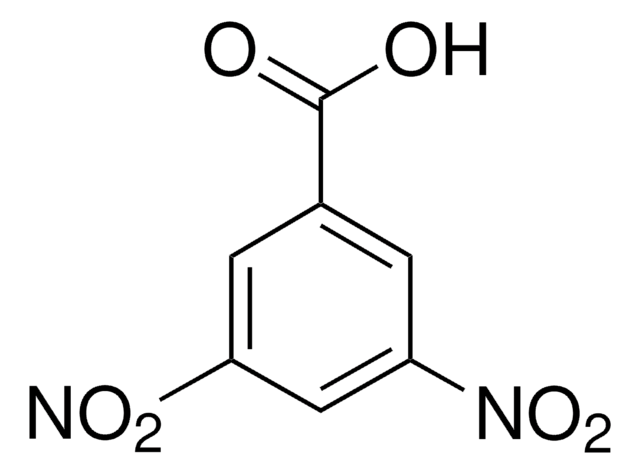54880
3-Hydroxybenzylhydrazine dihydrochloride
≥98.0% (HPLC)
Synonym(s):
α-Hydrazino-m-cresol dihydrochloride, 3-(Hydrazinomethyl)phenol dihydrochloride, NSD-1015
About This Item
Recommended Products
Quality Level
Assay
≥98.0% (HPLC)
form
solid
mp
137-140 °C
138-140 °C (lit.)
solubility
H2O: 50 mg/mL, slightly hazy, faintly yellow
SMILES string
Cl[H].Cl[H].NNCc1cccc(O)c1
InChI
1S/C7H10N2O.2ClH/c8-9-5-6-2-1-3-7(10)4-6;;/h1-4,9-10H,5,8H2;2*1H
InChI key
ONOJPUDFIOEGCX-UHFFFAOYSA-N
Looking for similar products? Visit Product Comparison Guide
Biochem/physiol Actions
Signal Word
Danger
Hazard Statements
Precautionary Statements
Hazard Classifications
Acute Tox. 4 Oral - Eye Dam. 1 - Skin Irrit. 2 - STOT SE 3
Target Organs
Respiratory system
Storage Class Code
11 - Combustible Solids
WGK
WGK 3
Flash Point(F)
Not applicable
Flash Point(C)
Not applicable
Personal Protective Equipment
Choose from one of the most recent versions:
Already Own This Product?
Find documentation for the products that you have recently purchased in the Document Library.
Articles
Serotonin (5-hydroxytryptamine) is principally found stored in three main cell types - i) serotonergic neurons in the CNS and in the intestinal myenteric plexus, ii) enterochromaffin cells in the mucosa of the gastrointestinal tract, and iii) in blood platelets. Metabolism of serotonin is carried out primarily by the outer mitochondrial membrane enzyme monoamine oxidase (MAO), which occurs as two molecular subtypes called MAO-A and MAO-B.
Our team of scientists has experience in all areas of research including Life Science, Material Science, Chemical Synthesis, Chromatography, Analytical and many others.
Contact Technical Service